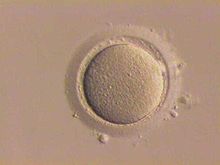A study performed in Belgium has shown that low-cost IVF for developing and poor resource countries is feasible and effective, with delivery rates not much different from those achieved in conventional IVF programmes.
This proof-of-principle study, say the investigators, suggests that infertility care may now be “universally accessible”.”We showed that the IVF methodology can be significantly simplified and result in successful outcomes at levels that compare favourably to those obtained in high resource programs,” they note. “We estimate that the cost of our simplified laboratory system is between 10% and 15% of current costs in Western-style IVF programs.” They calculate that a cycle of IVF with the simplified procedure can be performed for around 200 euro.
Behind the study lies the huge personal stigma which infertility brings to women in developing countries, who might as a result be disinherited, abused, ostracised and abandoned to a secondclass life in a polygamous marriage. Yet despite a record of 5 million IVF babies born in the world, the treatment of infertility by effective methods remains largely the preserve of developed countries. “Infertility care is probably the most neglected healthcare problem of developing countries, affecting more than 2 million couples according to the WHO,” said investigator Dr Elke Klerkx from the Genk Institute for Fertility Technology, Belgium, who presented the study today at the annual meeting of ESHRE.
The low cost IVF system tested in this study was based on an embryo culture method which removes the need for an expensive IVF laboratory with CO2 incubators, medical gas supply and air purification systems.(1) Outcomes from the low-cost culture method were compared with those from a conventional IVF culture system.
The study started in 2012 in IVF patients under the age of 36 and with at least eight oocytes available for fertilisation. The primary outcome measure was embryo quality at day 3, while secondary outcomes were embryo implantation rate and ongoing pregnancy rate.
An interim analysis of outcomes (as presented today) showed similar rates of fertilisation and embryo cleavage in both groups. However, in 23 out of 35 cycles assessed (65.7%) the top quality embryo selected by an independent embryologist originated from the simplified culture system. In this low-cost group the implantation rate was 34.8% (8/23), with an ongoing pregnancy rate of 30.4% (7/23), with one miscarriage at eight weeks’ gestation. The first lowcost baby was a healthy boy (3500 grams, 52 cm) born at 40 weeks’ gestation. Up to 31 May this year, 12 healthy babies had been born vaginally.
“Our initial results are proof of principle that a simplified culture system designed for developing countries can offer affordable and successful opportunities for infertility treatment where IVF is the only solution,” said Dr Klerkx “This is a major step towards universal fertility care. “If combined with single embryo transfer and low stimulation protocols, we estimate the cost of a treatment cycle can be less than 200 euro – with laboratory costs between 10% and 15% of those in Western-style programmes.”
This cost, however, would only be possible if a low-cost laboratory based on the simplified culture system were available. “In developed countries the cost of setting-up a high-quality IVF lab is between 1.5 and 3 million euro, but we would expect to set up a low-cost lab for less than 300,000,” explained Dr Klerkx, who added that the construction of a low-cost centre in Genk equipped for simplified IVF should be completed by November this year.
This would provide training for clinics from developing countries and a model for centres to develop themselves. “The simplified lab procedure will undoubtedly open up a new era in the history of IVF,” said Dr Klerkx. “The method not only offers affordable and successful access to IVF, but will make effective treatment techniques available to a much larger part of the world’s infertile population. This, therefore, may also be considered an important breakthrough in terms of human rights, equity and social justice.”
Abstract 14, Monday 8 July 11.15 BST
First pregnancies with a simplified IVF procedure: a crucial step to universal and accessible infertility care
Notes
1. The low-cost culture system, known as tWE (after the Walking Egg foundation which supports the programme, is based on an incubator system consisting of two glass tubes. The first tube serves as the generator of CO2 from a chemical reaction between citric acid and sodium bicarbonate. This brings into equilibrium the culture medium in the second tube. The connection between the tubes (comprising needles and tubing) can be easily removed once equilibration of the culture medium is achieved. Oocytes and sperm are injected by syringe into the tube with culture medium without disturbing the air environment inside the tube. Fertilisation and embryo development are simply assessed through the glass walls of the tube.
- The study’s principal investigator, Professor Willem Ombelet, is co-ordinator of ESHRE’s Task Force for Developing Countries and Infertility, whose aim is to study the ethical, socio-cultural and economical aspects of childlessness in resource-poor countries and to make infertility diagnosis and treatment available and accessible.
- Beginning in 2009 and leading up to the clinical trial, the simplified IVF system was developed, tested and validated for human application by Professor Jonathan Van Blerkom from the Department of Molecular, Cellular and Developmental Biology at the University of Colorado, Boulder.
If our reporting has informed or inspired you, please consider making a donation. Every contribution, no matter the size, empowers us to continue delivering accurate, engaging, and trustworthy science and medical news. Independent journalism requires time, effort, and resources—your support ensures we can keep uncovering the stories that matter most to you.
Join us in making knowledge accessible and impactful. Thank you for standing with us!

